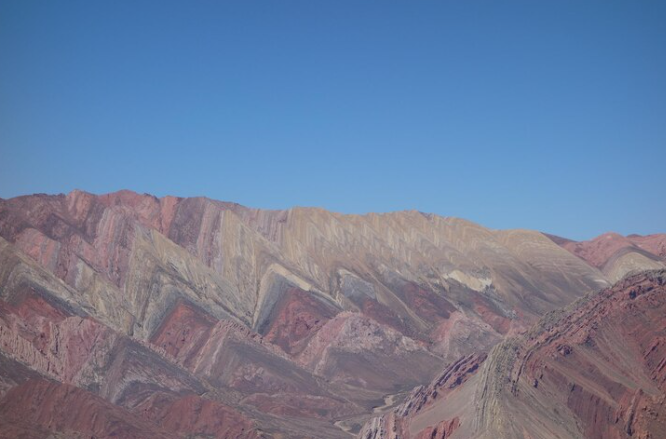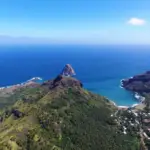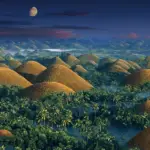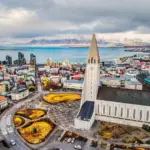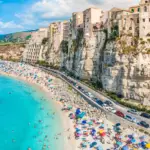
A Fascinating Encounter of History, Culture and Multicolored Landscapes
Introduction
Revealing the Charm of Purmamarca
Purmamarca Purmamarca is a picturesque and charming town located in the Quebrada de Humahuaca, in northwestern Argentina. With a welcoming population and numerous tourist attractions, this picturesque town attracts visitors from around the world. Located approximately 65 kilometers from San Salvador de Jujuy, Purmamarca is renowned for its stunning scenery and rich cultural heritage.
Location Overview and Historical Significance
Nestled at the foot of the majestic Andes Mountains, Purmamarca enjoys a privileged location that combines natural beauty with a rich historical heritage. Its strategic position in the Quebrada de Humahuaca made it an important commercial center for centuries, serving as a vital trade route connecting different regions. Furthermore, the city holds significant significant historical for the indigenous peoples of the region, who have inhabited these lands for thousands of years.
The pre-Columbian history of this region dates back to ancient civilizations such as the Incas and the Omaguacas. These indigenous peoples left their cultural legacy in the archaeological ruins scattered throughout Purmamarca, as well as in their traditions and customs preserved to this day.
With the arrival of Spanish colonists in the 16th century, European influence also left its mark on the city's colonial architecture. Purmamarca, therefore, represents a fascinating fusion of cultures and a stunning natural setting, providing a unique experience for visitors who want to explore its historical heritage and enjoy its stunning landscapes.
History and Culture of Purmamarca
Pre-Columbian Origins and Indigenous Influences
Purmamarca has a rich history dating back to pre-Columbian times. Before the arrival of the Spanish, the region was inhabited by indigenous peoples such as the Omaguacas and Tilcaras.
These civilizations developed a unique culture that left lasting marks on the social and cultural fabric of Purmamarca. The Omaguacas were known for their skill in arid land agriculture, building agricultural terraces to grow corn, potatoes, and quinoa.
Their skill in creating irrigation systems allowed them to thrive even in a challenging environment. Architecture also played an important role in the Omaguaca culture, with adobe and stone buildings being common.
Arrival of Spanish Colonizers and Their Influence on the Region
The arrival of Spanish colonists in the region brought significant changes to Purmamarca. From the 16th century onward, the Spanish actively explored Argentine territory in search of valuable minerals, establishing colonial settlements along the way. In Purmamarca, they discovered deposits of valuable minerals such as gold and silver in the nearby mountain slopes.
This discovery led to an increase in Spanish presence in the region, leading to the construction of mines and intensive exploitation of mineral resources. Spanish influence can also be seen in the architecture of the period, with the construction of colonial-style churches and administrative structures.
Preservation of Local Cultural Traditions
Despite the influence of Spanish colonizers, local cultural traditions in Purmamarca have been preserved over the centuries. The Tilcara Indigenous community played a key role in preserving these traditions, passing on ancestral knowledge and cultural practices from generation to generation. Today, this rich cultural heritage can be witnessed in traditional festivities such as the Andean Carnival and the Inti Raymi (Festival of the Sun) celebration.
Traditional indigenous music, folk dances, and local crafts are also essential elements of Purmamarca's vibrant culture. The preservation of these traditions is a testament to the local community's pride and commitment to maintaining its unique cultural identity in the face of modern challenges.

Geography and Natural Landscapes
The Geographical Location of Purmamarca in the Quebrada de Humahuaca, Northwest Argentina
Purmamarca is situated in a stunning setting within the Quebrada de Humahuaca, a spectacular mountain pass in northwestern Argentina. The city is located approximately 2,200 meters above sea level, nestled between the majestic mountains of the Andes.
This region is recognized as a World Heritage Site by UNESCO due to its natural beauty and historical importance. Quebrada de Humahuaca is known for its rich cultural heritage, with archaeological remains dating back more than 10,000 years.
The geographical location between the mountains creates a unique microclimate, characterized by sunny days and intense blue skies throughout much of the year. This spectacular landscape offers an ideal environment for exploring the lush nature and enjoying breathtaking views.

Highlighting the majestic Mountain of Seven Colors (Cerro de los Siete Colores)
One of the most impressive natural wonders that defines Purmamarca's unique landscape is the Cerro de los Siete Colores, also known as the Seven Colors Mountain. This geological monument captivates visitors with its vibrant and contrasting bands of red, brown, green, and ochre hues, a result of the mineral composition of the rocks.
Each layer reveals a history of millions of years of sedimentation and geological activity. The Cerro de los Siete Colores is a visual spectacle that changes throughout the day, depending on the sunlight.
At sunrise and sunset, the colors come to life intensely, creating a truly breathtaking scene for observers. The majesty of this mountain is a powerful reminder of nature's grandeur and instills a deep appreciation for this intricate geological masterpiece.
Exploring the Unique Rock Formations that Make Up the Landscape
In addition to the Cerro de los Siete Colores, the landscape around Purmamarca is dotted with unique rock formations that captivate the senses. These formations are shaped by millennia of wind and water erosion, creating gentle or steep contours, picturesque caves, and impressive gorges. A notable example is the Garganta del Diablo, a narrow crevice carved by the force of water over the centuries.
Visitors can follow winding trails through this narrow gorge, marveling at the imposing stone walls that tower above them. The combination of these peculiar rock formations and the mountainous landscape creates a stunning visual harmony, providing a perfect setting for hiking, trekking, and admiring nature at its most majestic.
Deep within small towns, hidden behind mountain peaks, lies this spectacular place. The Quebrada de Humahuaca offers unforgettable landscapes that leave visitors speechless.

Exploring the Historic Center of Purmamarca
Purmamarca is a town that enchants visitors with its rustic charm and tranquil atmosphere. Strolling through the historic center, travelers have the opportunity to admire well-preserved colonial houses dating back to the Spanish colonization period.
The colorful facades and the windows adorned with intricate details are living testimonies of history and the region's architectural style. Purmamarca's picturesque streets invite exploration at every turn.
Visitors can wander through narrow alleys, discovering small shops selling local crafts, where they can purchase unique souvenirs and traditional works of art. There are also a variety of cozy cafes and restaurants offering typical regional dishes.
Walking through the historic center, it's impossible not to be enchanted by Purmamarca's authentic and welcoming atmosphere. The fusion of colonial past and indigenous influences creates a unique atmosphere, transporting visitors to a bygone era while enjoying the timeless elements of this charming town.

The Church of Santa Rosa de Lima: A Historic Monument
The Church of Santa Rosa de Lima is one of the main tourist attractions in Purmamarca. This centuries-old church was built by Spanish colonists in the 17th century and still maintains its original structure.
Upon entering the church, visitors are greeted by an atmosphere of serenity and reverence. The interior of the Church of Santa Rosa de Lima is equally impressive, with its white walls and vaulted ceilings.
Altars adorned with sacred images and religious artwork transport visitors to a time when faith was a central part of life in Purmamarca. Soft lighting and lit candles create a mystical atmosphere, inviting spiritual reflection.
A visit to the Church of Santa Rosa de Lima is not only a religious experience, but also an opportunity to appreciate the region's historic architecture. This fascinating monument is a living testament to Purmamarca's rich and diverse past.
Conclusion: Discover the Magic of Purmamarca
In conclusion, Purmamarca is a city that captivates visitors with its rich history and vibrant culture. explore the historic center, travelers have the opportunity to immerse themselves in the charming atmosphere of this preserved colonial city.
A visit to the Church of Santa Rosa de Lima offers tourists the chance to connect with the region's religious past while appreciating the architectural beauty of this historic monument. Purmamarca is truly a hidden gem in northwestern Argentina.
When visiting this picturesque city, travelers will not only be enchanted by its tourist attractions, but also captivated by its magic, culture, and stunning landscapes. Purmamarca is a must-see destination for those seeking an authentic and enriching experience in Argentina.
Lucas Wanderlust has a tireless spirit of adventure, always seeking new travel experiences. Fascinated by the world and the possibility of exploring unknown destinations, he fell in love with the sense of freedom and self-discovery that traveling alone provides. With a backpack on his back and a heart open to the unknown, Lucas embarks on exciting journeys, where each destination becomes a unique chapter in his life story. He gives himself body and soul to the magic of solo travel, inspiring others to follow in his footsteps and discover themselves through adventure.

